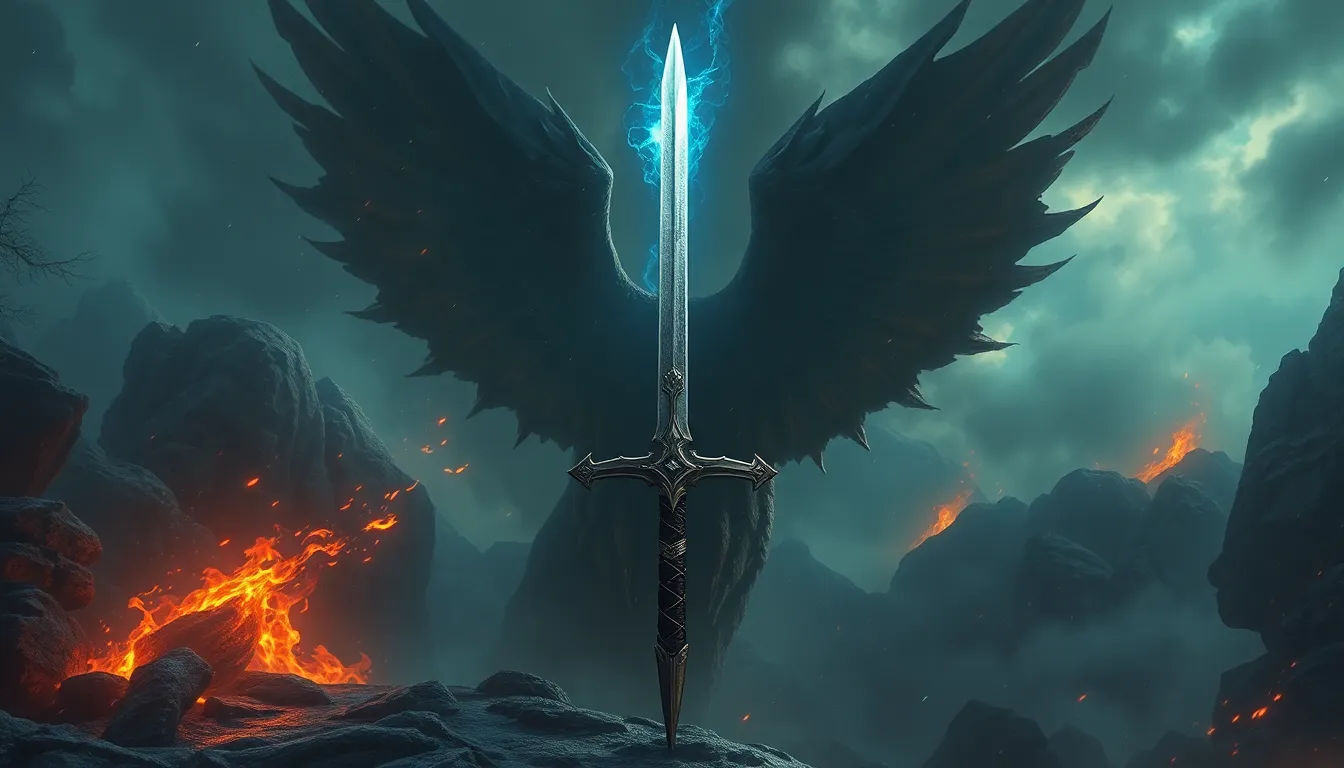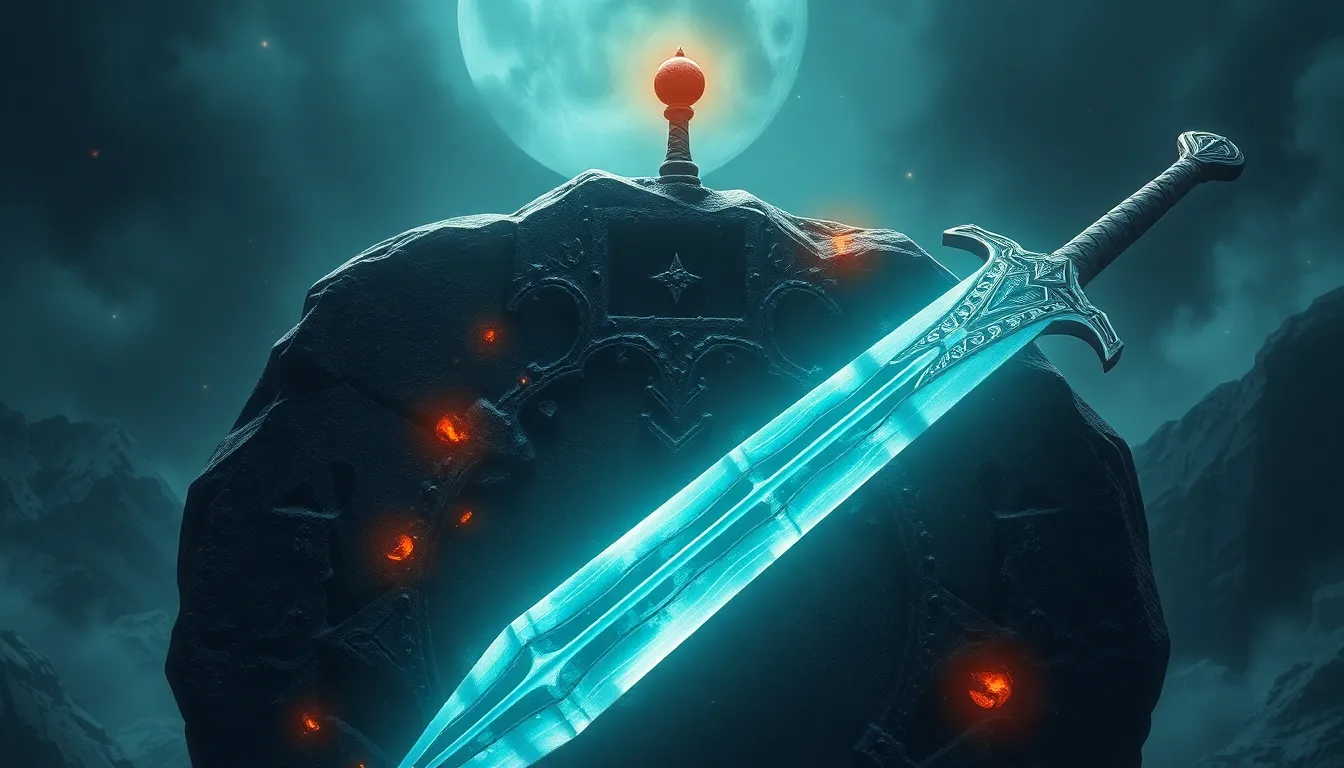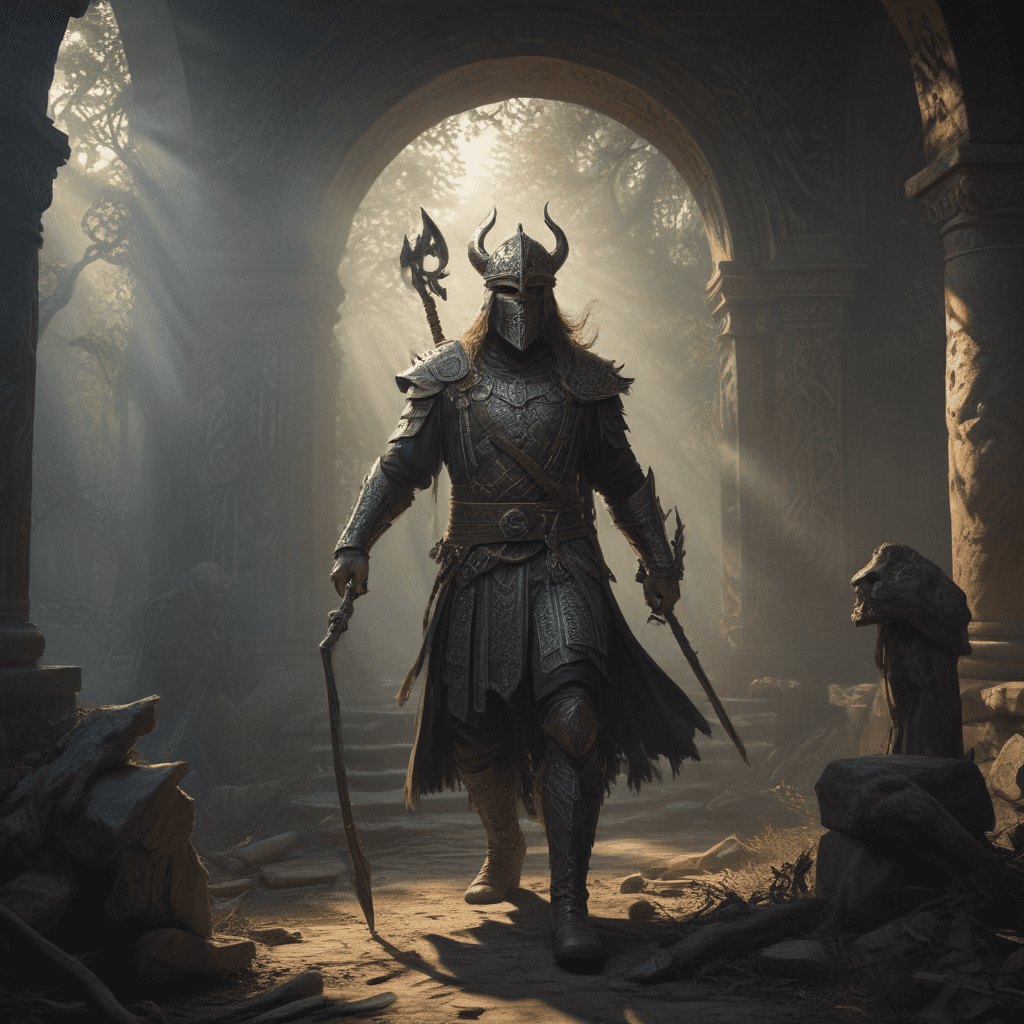The Sword of the Ancients: A Legacy of Power
I. Introduction to the Sword of the Ancients
The Sword of the Ancients represents more than just a weapon; it embodies a rich tapestry of mythology, history, and cultural significance. Throughout the ages, swords have been revered as symbols of power, courage, and honor, often intertwined with the stories of legendary heroes and epic battles.
This article aims to explore the legendary status of swords across various cultures, delving into their historical origins, cultural symbolism, and notable representations in literature and art. By understanding the legacy of the sword, we can gain insight into its enduring impact on human civilization.
II. Historical Origins of the Sword
A. Ancient civilizations and their legendary swords
From the bronze age to the medieval period, ancient civilizations crafted swords that not only served as tools for warfare but also as expressions of artistry and craftsmanship. Civilizations such as the Egyptians, Greeks, and Romans produced swords that would become legendary, each with unique characteristics and stories.
B. Archaeological findings and historical context
Archaeological excavations have uncovered numerous swords, providing valuable insights into the techniques and materials used in their creation. These findings often reveal the technological advancements and cultural influences of the time. For instance, ancient swords made from bronze were gradually replaced by iron, leading to the development of stronger and more effective weapons.
C. The evolution of sword-making techniques over time
The art of sword-making has evolved significantly over centuries. Key advancements include:
- Development of metallurgy, leading to stronger steel alloys.
- Improved forging techniques that enhanced blade durability.
- Innovative designs, such as the curved katana or the double-edged broadsword.
III. Cultural Symbolism of the Sword
A. The sword as a symbol of power and authority
Swords have long been associated with power and authority. Throughout history, they have been carried by kings, warriors, and leaders, symbolizing their right to rule and protect. A sword was often seen as a badge of honor, reflecting the social status of its wielder.
B. Religious and spiritual meanings associated with swords
In many cultures, swords are imbued with spiritual significance. For example, in some traditions, swords are seen as divine instruments, wielded by gods or celestial beings. They are often featured in rituals and ceremonies, representing the triumph of good over evil.
C. The role of swords in folklore and mythology
Swords frequently appear in folklore and mythology, serving as central elements in epic tales. They are often depicted as magical objects with the power to change the course of destiny. Notable examples include:
- The sword Excalibur, given to King Arthur by the Lady of the Lake.
- The Sword of Gryffindor, known for its ability to absorb that which makes it stronger.
IV. Famous Swords in History
A. The Excalibur legend and its implications
The legend of Excalibur is one of the most enduring tales in Western culture. This mythical sword symbolizes rightful sovereignty and the divine right of kings. The act of Arthur pulling Excalibur from the stone signifies his legitimacy as the ruler of Britain.
B. The Sword of Gryffindor and its magical attributes
In J.K. Rowling’s Harry Potter series, the Sword of Gryffindor is imbued with magical properties that allow it to absorb the venom of a basilisk, thus becoming stronger. This sword represents bravery and the qualities of a true Gryffindor.
C. Historical swords that shaped battles and nations
Many historical swords have played pivotal roles in shaping battles and nations:
- The Gladius, used by Roman soldiers, was instrumental in the expansion of the Roman Empire.
- The Claymore, a Scottish sword, became a symbol of Scottish nationalism and resistance.
V. The Sword in Literature and Art
A. Representation of swords in classic literature
Swords have been central to countless works of literature, often symbolizing heroism and conflict. From Homer’s “Iliad” to Shakespeare’s plays, swords represent the struggle between good and evil and the complexities of human nature.
B. Swords as artistic subjects in paintings and sculptures
Artists throughout history have depicted swords in their works, capturing their beauty and significance. Swords are often featured in:
- Renaissance paintings, symbolizing chivalry and valor.
- Sculptures that commemorate historical figures and battles.
C. Influence of swords on modern storytelling and media
Today, swords continue to influence modern storytelling across various media. Films, video games, and television series often feature swords as central elements, reflecting their enduring legacy in popular culture.
VI. The Craftsmanship Behind the Sword
A. Traditional sword-making techniques and materials
The craftsmanship behind sword-making is an intricate art that has been honed over centuries. Traditional techniques involve:
- Forging steel by hand, often using traditional bellows.
- Tempering the blade to achieve the right balance of hardness and flexibility.
B. The role of blacksmiths and artisans in sword creation
Blacksmiths play a crucial role in the creation of swords, often regarded as artists in their own right. Their skills and knowledge are passed down through generations, ensuring the preservation of techniques and traditions.
C. Modern innovations in sword-making
While traditional methods remain valued, modern innovations have also emerged, incorporating advanced materials and technologies that enhance sword performance and durability. Techniques such as:
- Computer-aided design (CAD) for precise measurements.
- Use of high-carbon steel and synthetic materials for improved resilience.
VII. The Sword in Modern Culture
A. The resurgence of interest in swords in popular culture
In recent years, there has been a noticeable resurgence in the interest in swords, largely driven by fantasy literature, films, and gaming. This renewed fascination has led to a greater appreciation for the historical and cultural significance of swords.
B. Swords in films, video games, and television
Swords are now iconic elements in many blockbuster films and popular video games. They serve as symbols of heroism, adventure, and conflict, engaging audiences worldwide.
C. The impact of martial arts and swordsmanship on contemporary society
The practice of martial arts and traditional swordsmanship has gained popularity, promoting physical fitness, discipline, and cultural appreciation. Schools and dojos dedicated to these arts foster community and preserve ancient techniques.
VIII. The Legacy of the Sword in Warfare
A. The evolution of sword combat techniques
As warfare evolved, so did sword combat techniques. From the one-on-one duels of the medieval knight to the formations of infantry, swordplay has adapted to various combat scenarios.
B. The role of swords in shaping military history
Swords have been pivotal in numerous historical conflicts, influencing military strategies and outcomes. Their presence on the battlefield often determined the fate of empires and nations.
C. Transition from swords to firearms and their implications
The advent of firearms marked a significant transition in warfare, leading to the decline of the sword as a primary weapon of combat. This shift not only changed military tactics but also altered the societal perception of swords from tools of war to symbols of nostalgia and honor.
IX. Preservation and Collection of Ancient Swords
A. Museums and exhibitions dedicated to ancient swords
Museums around the world house collections of ancient swords, showcasing their historical significance and craftsmanship. Special exhibitions often highlight specific cultures or time periods, providing insight into the evolution of sword-making.
B. The impact of collectors and enthusiasts on sword conservation
Collectors and enthusiasts play a vital role in the preservation of ancient swords. Their passion for history and craftsmanship drives them to acquire, restore, and share these artifacts, ensuring their legacy lives on.
C. Legal and ethical considerations surrounding sword artifacts
The collection and trade of swords raise important legal and ethical considerations, particularly regarding provenance and cultural heritage. Efforts



